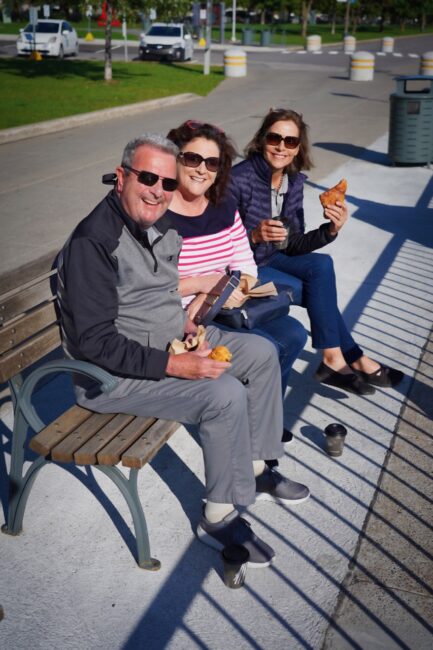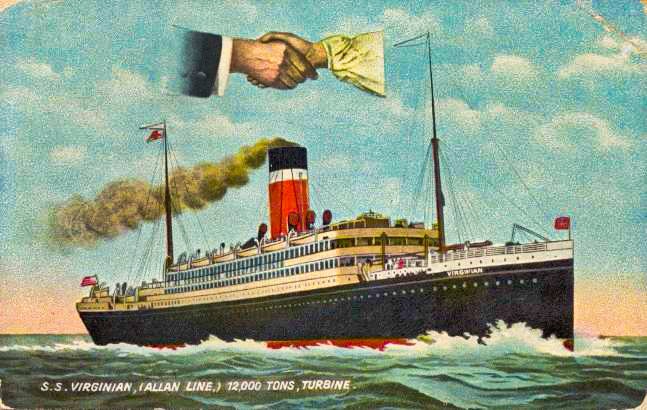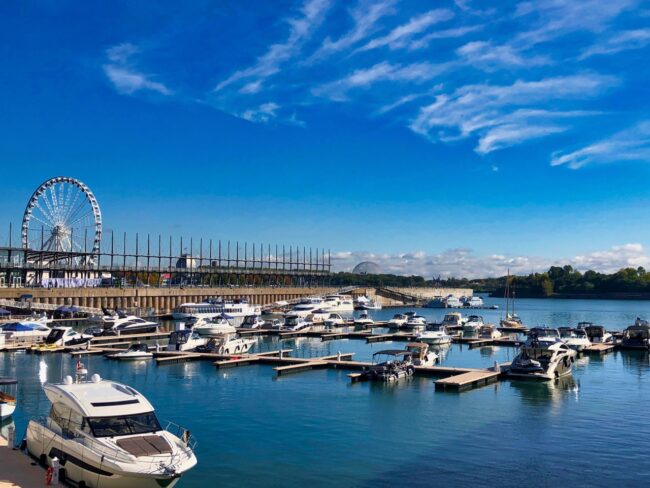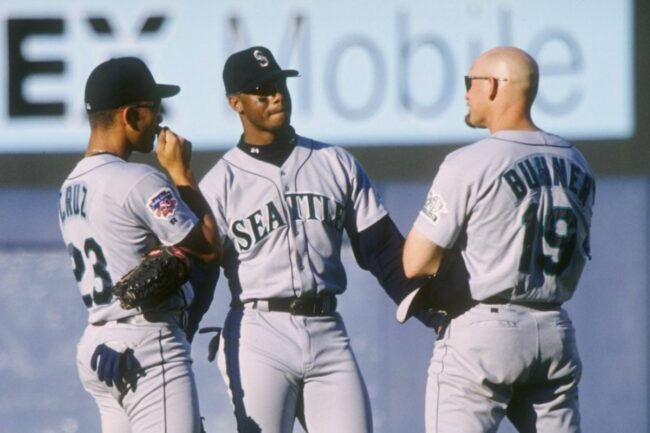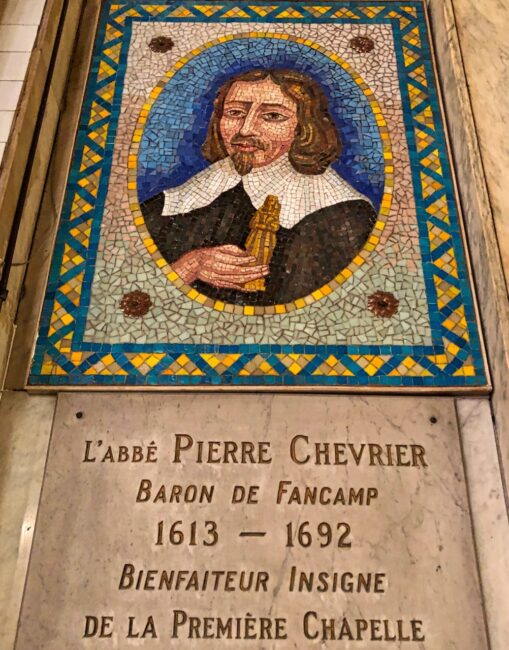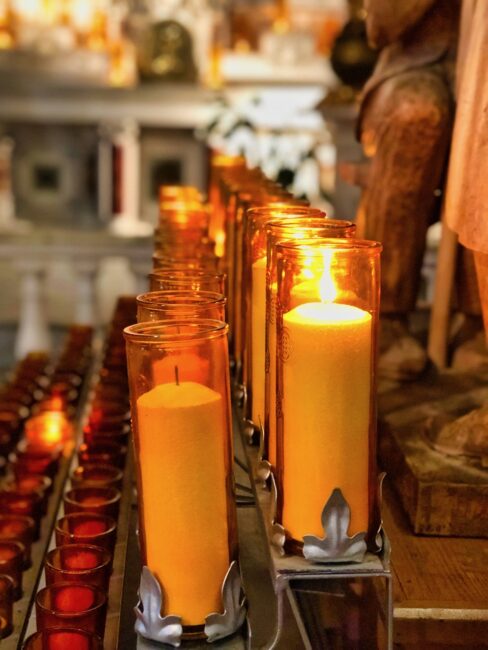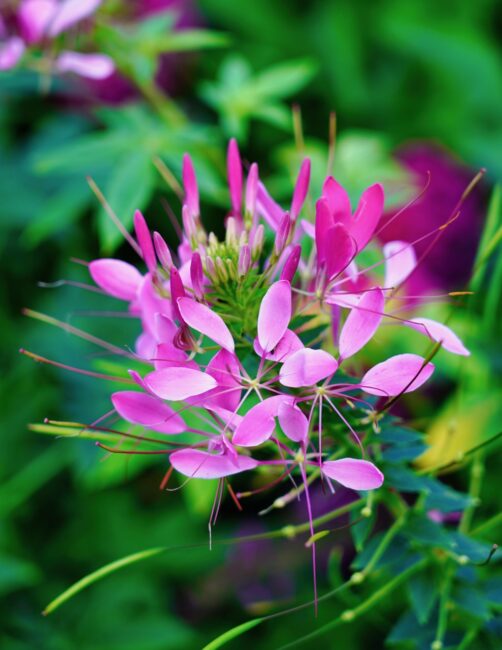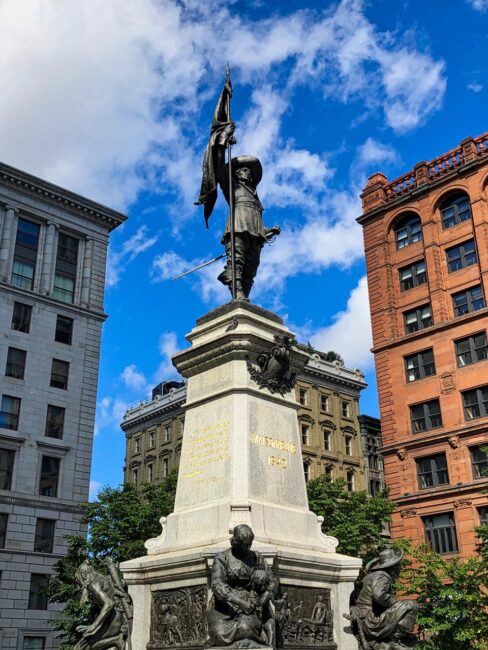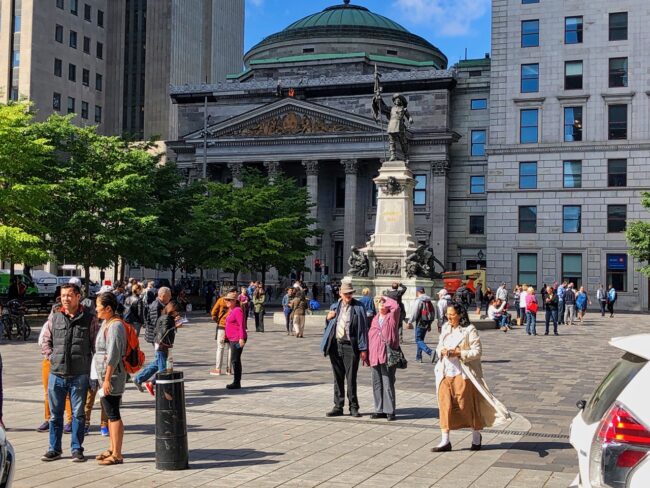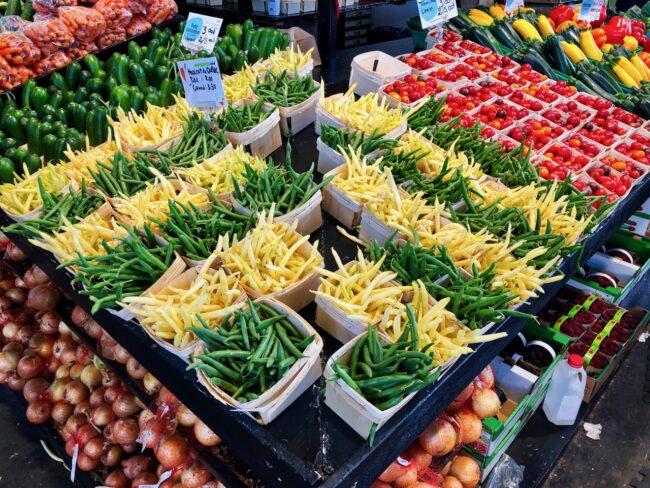
CHAPTER ONE: OFF TO MONTRÉAL
October 22, 2019
CHAPTER THREE: 3 CHURCHES, 2 MUSEUMS, 3 WEDDINGS … BUT NO FUNERALS
November 4, 2019Colorful Québec: Mai Tai Tom’s 2019 Journey To Montréal & Québec City
CHAPTER TWO: EXPLORING MONTRÉAL: THE CITY OF LIGHT … SHOWS
Day Two – Always The Gourmand, Down By The River, Sailors Sanctuary, Better On The Outside, Garden At The Château, Of all de Gaulle, Statue Stare Down, Christmas In September, Nose Job, Demonstration Time, Going To Market, “Please Call The Accountant Or The Priest,” There’s An ‘Aura’ About You, Three Restaurants In One, Shades of London & What’s Happening On The Side Of That Building?
This trip would be a little different than most. There was no waking up at the crack of dawn, so on our first morning in Montréal at about 9 a.m. we all meandered (I always meander before coffee) to a place recommended by Greg.
It was only about a five-minute walk to Olive et Gourmando (351 Saint-Paul St. W), where a number of people were waiting to be seated. Instead of waiting, we decided to grab some coffee and pastries to go.
The selection of very photogenic pastries were as beautiful as they were scrumptious. Tracy had a spicy cheese biscuit, while Mary and I each ordered an incredible apple pastry.
We headed down to the harbor for our impromptu morning picnic, passing the Pointe-à-Callière Archeology and History Museum that we “planned” to visit later on the trip.
It was a blue-sky, but very crisp, morning. After sitting down on a bench to enjoy my pastry, I made my way over to a historical marker.
The building in front of me was (and still is) the Édifice Edmonstone-Allan (Edmonston Allan Building).
This building “housed the corporate headquarters of Canada’s largest overseas navigation company. One of the company’s shareholders was Sir Hugh Allan, a wealthy shipbuilding, railroad construction and shipping trade magnate. In 1912, the Allan Company’s steamship Virginian (not starring James Drury) picked up the distress signal from the Titanic and wired it right here!”
A cruise ship reminded us that we were near the Port of Montreal.
Since it was such a lovely day, and tomorrow rain was expected, instead of going to the architectural museum, we decided an outdoor stroll was in order. Flags dotted the route.
Soon, we came upon a London-style attraction. La Grande Roue de Montréal is a 42-cabin Ferris Wheel offering panoramic views of Montréal. Across the river, a large sphere could be seen in the distance. La Biosphère Environmental Museum, designed by American architect and futurist Buckminster Fuller for EXPO ’67 (a world’s fair I attended with my parents), could be seen in the distance.
We headed toward a charming street leading to Place Jacques-Cartier, a square that serves as an entrance to the Vieux Port Montréal. It was named after the French explorer Jacques Cartier, who claimed Montréal for France in 1535. I don’t know if he wore any jewelry.
Lots of students were gathering in preparation for the climate change march later that day. Also nearby was an art exhibition. Kim has never met an art exhibit he didn’t like, but unfortunately for him (yet lucky for his wallet), it had yet to open.
A couple of blocks away from Place Jacques-Cartier stood what we called “Little Notre Dame.” We passed by the neoclassical Marché Bonseours where we’d visit after church.
Little Notre Dame’s real name is Notre-Dame-de-Bon-Secours Chapel (“Our Lady of Good Hope”), also known to locals as Église des Matelots (Sailors Church). It’s one of Montréal’s oldest churches and the oldest surviving chapel in old Montréal. It is where, throughout the years, Mariners have prayed for safe passage or for people praying for Seattle to make the American League playoffs.
At the top of the steeple is the statue of Our Lady Of Hope (aka the Virgin Mary) complete with an Evita or Rocky-like pose. The Bishop of Montréal donated it in 1849. It’s nicknamed the Star of the Sea, because it’s crowned with a starry halo and recalls the old prayer Ave Maris Stella. We decided not to climb to the top, as I at least wanted to make to Day Three. Truthfully, it would have been pretty easy (only 62 steps).
The chapel is also a tribute to Marguerite Bourgeoys.
Marguerite was a nun who was instrumental in the construction of the first chapel in 1657 and is also Canada’s first female saint. The chapel burned in 1754, but was rebuilt and completed in 1771. Marguerite was originally interred in France, but in 2005 her remains were returned to the church. The tomb is ”protected” by the statue of Notre-Dame-de-Bon-Secours.
So the story goes, in 1672, Marguerite returned with a wooden statuette of Notre-Dame-de-Bon-Secours for the chapel. It miraculously survived the fire. The church has other statues and art to admire.
There is a painting of Marguerite over the altar.
A piece of art commemorating another Marguerite (d’Youville) can be seen in the church.
A very noticeable aspect of this church are the boats hanging from the ceiling.
To show appreciation for not sinking on their journeys, sailors would commission carved replicas of sailing ships that are ex-votos (votives offered to a saint or to a divinity) hung in the chapel.
We wandered around looking at the statues and paintings located inside. The chapel has also been a place to welcome new immigrants and is also the “birthplace of the English-speaking Catholic community of Montréal.” If lucky, maybe you’ll hear the 1910 Casavant pipe organ.
We lit a candle and were on our way.
That striking building we passed on the way to the church was the Marché Bonscours, constructed in the mid-1800s. It served as the Parliament of United Canada, then as Montréal’s first City Hall and finally as the city’s central meat market. Today it houses restaurants and shops. While the outside is beautiful, it’s not worth going in (unless you’re shopping), and the interior even made the dreaded Elevator List (see La Sagrada Familia Elevators 2015).
A few blocks further we came upon a historical site that had not been on my radar, and I plan pretty meticulously. We would soon learn that it was Château Ramezay, which was erected in 1705 by Claude de Ramezay, the Governor of Montréal.
In 1895, Château Ramezay was was converted into a museum that chronicles the city’s history. It also has a magnificent garden, much to Tracy’s delight.
In the 18th century, this charming garden was twice as wide and four times longer. That must have been spectacular, because even as temperatures dropped, there were still some colorful flora (zinnias, cleomes and hummingbird mint) blooming.
Currently, the smaller garden is divided into three equal parts, including a kitchen garden (I believe I saw this in Invasion of the Body Snatchers).
… a pleasure garden and an orchard. It’s “based on the gardens of the dignitaries of New France.”
There is a neat signage feature where you can push a button (in six languages) and learn more about the garden and the part it has played through the past few centuries.
The autumn colors were beginning to pop as Kim diligently tried to get a great angle. Luckily, he stayed upright.
Located across the street from the chateau is Montréal’s ornate city hall, Hôtel de Ville. It was originally constructed between 1872 and 1878, and then rebuilt in 1926 following a fire.
On my 15th birthday in July of 1967, France’s president, Charles de Gaulle, stood on its balcony and shouted, “Vive le Québec libre” (“Long live free Québec”). This made Quebec’s separatist movement very happy. The federal government that had invited him to celebrate Canada’s centennial, were not happy. According to the Lonely Planet website, “Those four words fueled the fires of Québécois separatism and strained relations with Ottawa for years.” Of all de Gaulle!
There are free tours, but unfortunately for us it was closed for renovations.
We soon happened upon a tall column standing at the north end of Place Jacques-Cartier. The Monument à Nelson, erected in 1809, is dedicated to British vice-admiral Horatio Nelson. It honored both his memory and the fact that he defeated Napoleon’s fleet. It debuted four years after Nelson was killed in the Battle of Trafalger which has caused some controversy due to the fact it celebrates a British victory over France.
There have been movements to have the monument displaced to another part of Montréal, but the city’s oldest monument has stayed put for more than two centuries. The bas-relief scenes on the sides of the base depict scenes from Nelson’s battles.
There are a number of ways to get around Montréal. We decided to keep hoofing it on our own.
Across the street from the Nelson Monument we walked by a fountain in Place Vanquelin, formerly called Neptune Square that once featured a statue of Neptune, God of the Sea. Wait, didn’t we see him in Bologna (photo below) last year?
In 1924 it was re-named City Hall Square, and six years after that it became Vanquelin Square, complete with a statue of Jean Vauqelin (no Neptune here), a French naval officer and captain of a French naval ship that distinguished itself in the Seven Years War. Now, Vauquelin and Nelson stare at each other 24 hours a day for the rest of eternity.
Wandering through Champ de Mars Square, a large building loomed ahead (Palais de Justice), from which the view over this grassy area is non-existent (no windows!).
The gang next took a quick detour into a Christmas store. I spent my time relaxing in the Nutcracker Suite. With the weather warming up. I was shedding clothes, but luckily for the Montreal public, this was as far as I’d go.
We headed back through Place d’Armes, and its view of Basilique Notre-Dame de Montréal, where would be back to in just a few hours for an incredible show.
We again said hello to the statue of Paul. There are four smaller statues at the base of the monument.
Besides the statue of Paul Chomedey de Maisonneuve, there is another quirky statue at the edge of the square. A man with a large proboscis stands tall holding a pug dog, which, as we would find out, is one of two statues on the square that comprise The English Pug and the French Poodle. From Art Public Montréal: “A dashing looking English man, holding his pug, gives a superior stare at Notre-Dame Basilica, symbol of the religious influence on French Canadians. ‘Feets’ away to the northern corner of the building, a woman in Chanel-style suit, poodle against her, shoots an offended look to the Bank of Montreal’s head office, built in 1845-1847 and symbol of English power. With their masters oblivious to each other, the two dogs on the alert already sniffed out the opportunity to unite.” And they called it Puppy Love! (We took the photo of the second statue a couple of days later.)
We had to rein Kim in and saddle him down after horsing around taking photos of Mr. Ed’s cousin.
Our hotel had recommended a restaurant for lunch, so we plopped ourselves down at Marché La Villette (324 Saint-Paul St W), which was originally a boucherie and charcuterie, but is now a quaint French bistro. My croque monsieur hit the spot after all our walking.
A glass of white wine didn’t hurt, either,
Arriving back at the hotel, there was no time for napping (thankfully). At 2:30, we were met by Mary’s friend, Greg, who was going to take us to buy some fruits and vegetables, but we weren’t going to a supermarket. But first, we’d hang out with about half a million people for a few moments.
Greg took us to the street where hundreds of thousands of people were participating in a massive “Climate March.” It was pretty incredible watching these mostly young people cascading down the hill like a rushing waterfall of humanity.
Kim and Tracy braved the wave and got some photos. Quite a sight.
We walked toward the metro past the statue of Queen Victoria, located in the aptly named Victoria Square. The queen wears a crown with Fleur-de-lis motifs, which is a reference to the French ancestry of British monarchs. She also holds a laurel (no hardy) wreath in her left hand. The statue was unveiled on November 21, 1872.
The Square Victoria Métro station includes an interesting backstory. It contains Hector Guinard’s art nouveau entrance from the Paris Métro. Created at the beginning of the 20th century, it is “one of the few authentic installations on a rapid transit station outside Paris. It was gifted in 1967 by the RATP (Régie autonome des transports parisiens) to commemorate the collaboration of French and Canadian engineers in building the Metro.” Guinard created many of these métro entrances in Paris. Unfortunately, many have been demolished, however the remaining ones are now listed as historical monuments in Paris.
Good news for us: The métro was free this day to accommodate those participating in the climate march. It was about a 20-minute ride and then about a five-minute walk to our next destination, Marché Jean-Talon, located in Little Italy. By now the temperature had become even warmer, and I was feeling the heat. I commented, “This is what I call Canadian bakin’ weather,” a comment to which I, not surprisingly, received no reply. (Kim and I have known each other for 50 years, so he has heard all my puns.)
Marché Jean-Talon is one of the oldest public markets in Montréal, and one of the largest open-air markets in North America. Even though we were there late in the day, the colorful fruits, veggies and flowers still were quite a sight to see.
Tracy would love to see these ghost peppers (photo on right)) in our neighborhood market, so she could burn my lips off with her delicious Ghost Pepper Strawberry Jam recipe.
Artichokes and radishes never looked this good.
After exploring the market, Greg purchased some veggies and sourdough bread. Meanwhile, there was a church nearby that I wanted to visit (yes, I know, “shocking”).
It was a short walk over to Little Italy’s Chiesa Della Madonna Della Difesa, a Roman-Byzantine style church that was of interest to me due to an unusual cupola that contains perhaps the most infamous fresco located in any church. Seen riding a horse in the fresco is none other than Benito Mussolini. It was painted before World War II and commemorates Mussolini signing the Lateran Pacts, which would recognize Vatican City as an independent state.
 The church was supposed to be open until 4 p.m., and we arrived about 3:30, only to find the doors locked. There was a phone number, so Greg called, and a voice asked whether he’d like to speak to the church’s accountant … or the priest. Choosing the priest, he was told the church would not open until 6:30. Since we had other plans, we wouldn’t see the interior of the church or the fresco (photo below from internet).
The church was supposed to be open until 4 p.m., and we arrived about 3:30, only to find the doors locked. There was a phone number, so Greg called, and a voice asked whether he’d like to speak to the church’s accountant … or the priest. Choosing the priest, he was told the church would not open until 6:30. Since we had other plans, we wouldn’t see the interior of the church or the fresco (photo below from internet).
In front of the church is a statue commemorating all Italian soldiers, and a statue of Jesus on the cross.
Afterward, we stopped into a Little Italy bakery, where Greg purchased some pistachio cookies, while Kim got us fatter and bought limoncello (Wow!) and almond cookies.
We rode the crowded metro back to the station nearest our hotel.
We were met by a tidal wave of climate marchers, who were taking the metro in the other direction. Some might still be there.
Saying goodbye to Greg for now (we’d meet him later for dinner), we freshened up and headed out to an experience we were looking forward to attending. Before leaving for Canada, I had purchased tickets to AURA (C$24), a light and music show that takes place in the evenings at Basilique Notre-Dame de Montréal.
Our tickets were for the 6 p.m. show and we’d been advised by a friend to get there no later than 5:30 to wait in line. It was a good call, because the show has been a sellout for two consecutive years, and when we were let in at 5:45, the line stretched nearly to Toronto.
Inside we were greeted by near pitch darkness except for the illuminated area behind the altar.
Exploring for the next 25 minutes, we followed a path of lights around the church, while various paintings and statues would be gradually revealed.
A very cool idea.
The statue of Jesus lit slowly until an extra light was placed on his heart. It would not be a fantastic church experience without Kim’s ceiling photo. There is no ceiling on the amount of great photos he takes.
At about 6:15, everyone was seated (no photos or videos allowed), and the “musical experience” started.
For the next 20 minutes, as music filled the church (some solemn and some sounding like a version from Trans Siberian Orchestra … although not them) a dazzling array of lights and lasers filled the church in cadence with the music (this photo from internet).
It exceeded expectations (you might even say that no other show like this can “hold a candle to it”), and if you go to Montréal, I highly recommend you get your tickets online early.
Mai Tai Tom’s Helpful Hint: There is no assigned seating so make sure you grab your pew (that just sounds wrong) on the aisle about 12 rows from the back. Not only does it afford you the best vantage point for the show, but you’ll beat the throngs leaving.
The show ended at 6:35, which meant we had ten minutes to hightail it to the restaurant where Greg had made 6:45 reservations (they seem to eat earlier in Canada than they do in Europe). At exactly 6:44 we made it to the entrance of Monarque (406 St Jacques St), which boasts a sleek-looking interior.
It’s almost three restaurants in one. There is seating at the modern bar. In the same room is the Brassiere, where we sat.
In the back is a more formal dining area, Salle à Manger. You can view the open kitchen between the brassiere and Salle à Manger.
Dinner was excellent. I started with a Quebec Buffalo Mozzarella and followed that up with a perfectly cooked pork chop (C$26) and stuffed potato with cheese curds. Kim’s chicken soup appetizer garnered a Wow!
Greg’s Classic Beef Tartare was the second best I had ever tasted (the one in Edinburgh at L’Escargot Bleu still holds that honor).
Tracy was a little disappointed with her hangar steak, but, oh, how she loved those frites. Mary’s main dish was a seared tuna Nicoise salad.
After dinner, Greg suggested we go somewhere for a drink. As we walked inside the classy and elegant Hotel Le St. James bar that is in the XO Le Restaurant …
…. the four of us had a flashback to our dubious descent into debauchery that would “highlight” our last night in London in 2017. Tracy said that if “a white-coated waiter” comes to our table rolling a bar cart, we were out of there. I couldn’t look at a bottle of gin for a few months after that experience.
Fortunately, this proved to be a quiet evening as we all consumed just one drink that Greg generously purchased for the table.
On the return to our hotel, we stopped in our tracks gazing at projections of people walking on the side of a building. In 2016 it was decided large-scale video projections should be incorporated throughout the city, inspired by Montréal’s history. The project is called Cité Montréal. We had never seen anything like it. It’s dubbed, “one of the largest outdoor video-projection installations in the world. There are 26 tableaux composed of images, dialogue and music projected on walls, in alleys, on the ground and on trees in historic Old Montréal, as well as inside the Fairmont.” Check it out online.
With apologies to Paris, I said, “This is really ‘The City of Light’.” Tracy said, “Montréal is really The City of Light … Shows!”
After walking nearly 11 miles on our first full day, the troops were noticeably and predictably tired.
Undeterred by the rainy weather coming our way, the next day would include visiting a few historic churches, a couple of intriguing museums and end with a delectable dinner at an intimate restaurant in the Vieux Port, complete with a surprisingly tasty and mysterious gnocchi.
During the day, we’d also crash a few weddings along the way.
NEXT: CHAPTER THREE: 3 CHURCHES, 2 MUSEUMS, 3 WEDDINGS … BUT NO FUNERALS
Day Three – Frolicking Squirrels, No Snakes Here, Where’s Godzilla?, A “Fine” Collection, Lost In The Museum, Not Winning With Winnie, Ziggy, Thou Shalt Bacon, Queen Of The World, Reliving Montréal’s History, Therein Lies the Rub, Un Po Di Piu & Jackie Robinson Night







